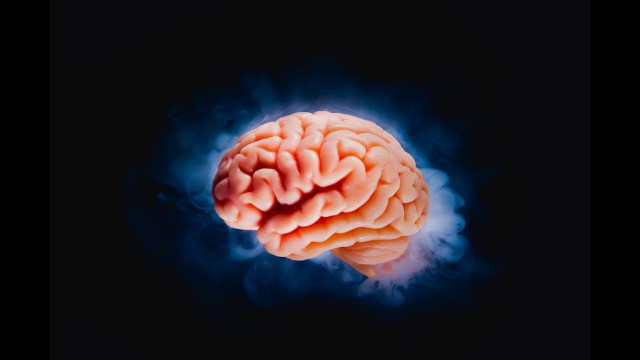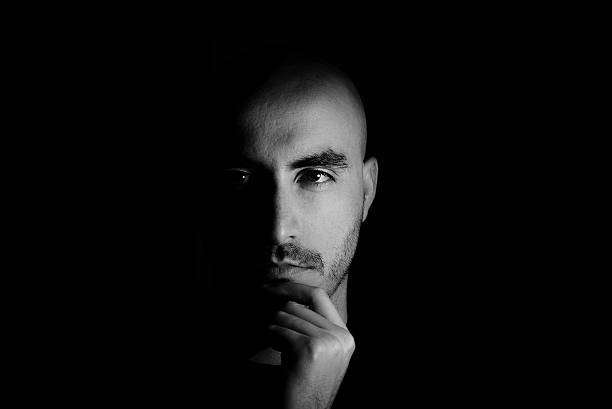If you were to ask a child, a king, and a scientist what happiness is, you’d likely receive three entirely different answers. A child might say candy and cartoons. A king might whisper “power” or “peace.” A scientist might describe it as a complex neurochemical response evolved to promote survival.
Yet for all our searching, happiness remains elusive. It’s the subject of centuries of philosophy, oceans of poetry, and now, mountains of brain scans and behavioral studies. But here’s the twist that science keeps uncovering again and again: most of what we believe about happiness is wrong. It doesn’t reside where we expect. It doesn’t behave how we wish. And it often arrives through the side door—while we’re chasing something else.
This is the story of happiness: not as wishful thinking or self-help fluff, but as biology, psychology, and paradox. It’s about what your brain really wants, what your life is really for, and how understanding the truth of happiness might just make you, well… happy.
The Dopamine Myth: The Pleasure Trap
Let’s begin in the brain.
For years, we believed that happiness was simply pleasure—intense, delicious, immediate gratification. That rush you feel when you bite into chocolate, hear applause, or get a like on social media? That’s dopamine—a neurotransmitter often labeled the “pleasure chemical.” It plays a major role in the brain’s reward circuitry.
But here’s the catch: dopamine isn’t really about pleasure. It’s about anticipation.
Research has shown that dopamine spikes not when we receive a reward, but when we expect one. The joy of the treat is fleeting. What keeps us going is the chase. That’s why you might crave a new car, only to find the joy fades days after you buy it. The brain moves on, craving the next thing.
This “dopamine loop” is great for survival—it drove early humans to hunt, explore, invent. But in the modern world, it can trap us. We become addicted not just to substances, but to success, likes, purchases, and achievements. We’re rewarded not with lasting joy, but with brief sparks that quickly fade.
And so, we run. We strive. We scroll. But happiness, it seems, keeps shifting just out of reach.
Hedonic Adaptation: The Tyranny of Getting Used to Things
There’s a cruel irony in human psychology: we adapt to pleasure astonishingly fast.
This phenomenon is called hedonic adaptation, and it’s one of the biggest obstacles to sustained happiness. Win the lottery? Research shows you’ll be no happier than before within a year. Buy a dream home? It’ll just become the place where your mail gets delivered. Fall madly in love? That euphoria fades as the relationship normalizes.
Even tragedy obeys this pattern. People who become paraplegic often report regaining their baseline happiness after an adjustment period. The human mind is a remarkable calibrator. It recalibrates to joy just as it does to pain.
This doesn’t mean life is futile. It means happiness is not something you achieve. It’s something you cultivate.
And that requires a radical rethinking of where happiness actually lives.
The Power of Purpose: A Deeper Kind of Fulfillment
Meet Victor Frankl, a psychiatrist and Holocaust survivor. In Nazi concentration camps, he witnessed unimaginable suffering. But he also observed something extraordinary: those who had a reason to live—a sense of purpose—were more likely to survive.
In his famous book Man’s Search for Meaning, Frankl proposed that humans aren’t wired to seek pleasure. We’re wired to seek meaning. And when we find it, even suffering becomes bearable. Without it, even pleasure becomes hollow.
Modern science agrees. Studies show that people who describe their lives as meaningful—not necessarily pleasurable—report greater life satisfaction. These are parents raising children, doctors working long hours, artists struggling to complete a masterpiece. Their lives aren’t always “happy” in the conventional sense, but they are rich with purpose.
So maybe happiness isn’t the absence of struggle. Maybe it’s the presence of something worth struggling for.
Social Connection: The Hidden Blueprint of Joy
In the longest-running study on human happiness, the Harvard Study of Adult Development followed participants for over 80 years. The result? The single greatest predictor of happiness wasn’t wealth, fame, or even health. It was relationships.
Social connection protects our bodies and minds. People who feel connected live longer, get sick less often, and show greater resilience to stress. Loneliness, by contrast, is more dangerous than smoking 15 cigarettes a day.
But it’s not just the number of friends you have—it’s the quality of those relationships. Do you feel safe, seen, and supported? Do you have someone to call when life falls apart?
In an era of digital “likes” and followers, we must remember: happiness doesn’t come from being known by many. It comes from being truly known by a few.
The Happiness Set Point: Nature, Nurture, and Neuroplasticity
Some people are born happier than others. Twin studies show that genetics account for up to 50% of your baseline happiness. This “set point” means some of us naturally wake up cheerful, while others are more prone to melancholy.
But that’s not the whole story.
The remaining 50% is shaped by circumstances (which have surprisingly little long-term effect) and by intentional activities—how we think, what we focus on, how we behave. This is where the power of neuroplasticity comes in: the brain’s ability to change in response to experience.
Practices like gratitude, mindfulness, and acts of kindness actually rewire the brain. They strengthen the default neural pathways for joy and calm. Over time, this doesn’t just feel better—it is better. Your baseline mood lifts.
So yes, your happiness is partly inherited. But it’s also trainable. Like a muscle, it grows with effort and intention.
Gratitude: The Smallest, Strongest Force
If there’s one habit backed by overwhelming science for increasing happiness, it’s gratitude.
Writing down three things you’re grateful for each day—no matter how small—can boost mood, increase optimism, and reduce depression. Why? Because gratitude shifts your attention from what’s lacking to what’s present. It flips the brain from scarcity to sufficiency.
In a world that constantly sells you the message, “You need more to be happy,” gratitude whispers, “You already have enough.”
And here’s the magic: the more you practice gratitude, the more your brain scans for things to appreciate. It’s like tuning an internal radio to the frequency of joy.
Flow: The Joy of Total Absorption
Think of a time when you were so immersed in something—painting, running, solving a puzzle—that you lost track of time. That state is called flow, and it’s one of the most powerful sources of happiness.
Psychologist Mihaly Csikszentmihalyi, who coined the term, described flow as a state where skill meets challenge, and the self disappears. You’re not thinking about happiness—you’re living it.
Flow doesn’t come from passivity. It comes from engagement. So ironically, doing something hard—if it aligns with your strengths and values—can bring more joy than doing something easy.
Video games, music, sports, even meaningful work can induce flow. And in that timeless space, the burden of self-consciousness lifts, and happiness flows in.
Acceptance: The Paradox of Letting Go
Perhaps the most counterintuitive truth about happiness is this: chasing it too hard can make it vanish.
This is known as the paradox of hedonism—the idea that directly pursuing pleasure often leads to disappointment. Like trying to hold water in your hands, the tighter you squeeze, the more it slips away.
Modern psychology echoes this. The field of Acceptance and Commitment Therapy (ACT) teaches that resisting pain often intensifies it. Instead, accepting your feelings—without judgment—frees you to live a richer life.
True happiness, then, is not the absence of pain. It’s the willingness to feel it all—grief, joy, confusion, love—and to live fully anyway.
A New Definition: Happiness as Wholeness
So what is happiness, really?
It’s not a constant smile. Not a tropical vacation. Not a perfect body or a clutter-free home.
It’s wholeness.
It’s feeling your feet on the ground, your breath in your chest, your people in your heart. It’s knowing that life is imperfect, but beautiful. That sadness is part of joy. That pain deepens meaning. That you don’t have to feel good all the time to live a good life.
Happiness, in its truest form, is not a destination. It’s a way of being present—with all of it.
The Science of Small Things
So where do you find happiness?
Not in grand gestures. Not in someday. But here. Now. In the small moments science says matter most.
A warm cup of tea on a cold morning.
A friend remembering your birthday.
A walk in the sun.
A shared laugh.
These are not clichés. These are biological beacons of well-being. They matter. They change your brain. They stitch together the fabric of a meaningful life.
Happiness Is a Practice, Not a Place
If there’s a final takeaway from the science of happiness, it’s this: you don’t get happy. You practice happiness. Like an instrument, it takes tuning. Like a relationship, it takes tending. Like a garden, it grows with care.
And when you stop trying to be happy all the time—and start trying to be whole, engaged, connected, and present—you just might find happiness was there all along.
Not in what you chased. But in how you lived.
Would you like a version of this formatted for web or downloadable as a PDF or Word document?






